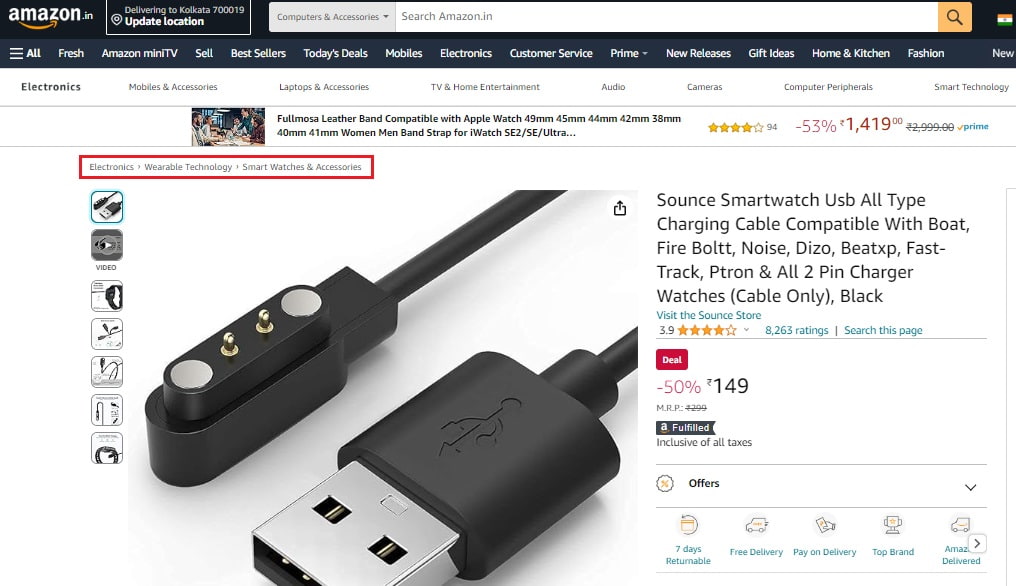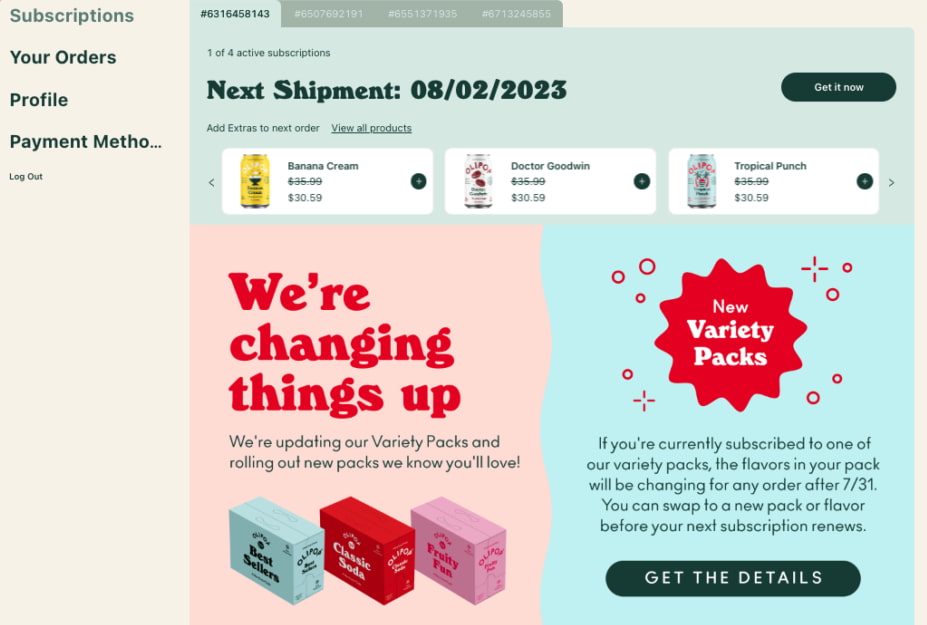Are you frustrated by potential customers visiting your e-commerce store but leaving without making a purchase? If so, then you are not alone. Many e-commerce store owners around the globe are often baffled seeing how their marketing ads drive good traffic to their online storefronts, but the sales seem to remain unaffected. Why is that? Well, the answer lies in a poorly directed e-commerce product discovery journey!
Here’s the thing. e-commerce is booming right now, with estimates indicating that it will account for 23% of global retail sales by 2027 and surpass USD 5.5 trillion in global revenue. However, unless e-retailers get their product discovery journey right, they will leave precious money on the table. The majority of online retailers prioritise search. A search-focused approach presumes that the customer knows exactly what they want. In reality, most consumers are unaware of what they desire until you put it right before them. Furthermore, product discovery is not the purpose of e-commerce search. Customers might not find what they’re looking for as a result. The outcome? One poor customer experience leads customers to leave and never look back at your collection again.
Studies show that 6 in 10 online shoppers in the US are looking for a better product discovery experience. If your e-commerce store does not provide them with product options relevant to their queries, it will reflect poorly on your brand. An ideal customer experience with product discovery should make the transition from search to purchase seamless and anticipate the requirements of each unique customer. If you can elevate the product search and discovery process for your e-commerce store, you can increase your sales and boost consumer retention.
In this blog, we will highlight seven ways to boost your product search and discovery process to elevate your e-commerce website’s customer experience. But first, let’s understand what product search and discovery are and how they may differ.
How are Product Search and Product Discovery Different?
While the terms “product search” and “product discovery” are often used interchangeably, each offers a different perspective on how consumers find and engage with products.
Product search enables consumers to navigate a website’s huge database and locate exactly what they know they want. Product search involves a higher degree of specific search intent and requires a high degree of precision. For instance, when a visitor searches for a particular keyword like “blue A-line short dress”, they have already expressed their intent to buy an A-line dress that is short in length and blue in colour.
Product discovery refers to the process by which prospective customers on your e-commerce website discover your products that they didn’t know they wanted, but do actually want. Product discovery involves a high degree of general search intent and requires a lower degree of precision. We can exemplify this by taking the previous search query and modifying it to the phrase “blue dress,” “A-line dress,” or even simply “dresses”. In this case, the user may be trying to compare several options and find out what colour, type, or length of dress would suit her the best. Based on their previous searches, a good product discovery process would recommend options suited to their taste.
In short, someone is searching if they look for something really specifically, but they are discovering if they are learning something for the first time and if it has any influence on their purchases. Furthermore, “searching” is an active process, while “discovery” is mostly passive. This makes product discovery ripe for potential, as a good product discovery journey can influence them to buy something they don’t need but want anyway.
Now that we have provided you with a comprehensive understanding of product search and discovery, let’s see how you can elevate the quality and accuracy of these processes for your e-commerce website.
Seven Ways to Boost Product Search and Discovery for E-commerce Websites
Here are seven ways to boost the product search and discovery process for your e-commerce website:
1. Improve Navigation Options for an Enhanced Shopping Experience
Intuitive navigation can help with effective product search and discovery for both types of customers—those who are exploring your e-commerce website in search of an appealing product and those who are certain about what they want to buy. This user-centric strategy should be a key component of any website development plan since it puts transparency and ease of use at the forefront. It also shows that the user’s needs and expectations are considered when designing the website.
Users can simply locate desired products more quickly with the help of a navigational search. It does this by offering browsing pages that aggregate relevant terms together. Furthermore, product listings and categories can be made more easily accessible on the platform by using catalogue tagging.
The typical workflow of an intuitive navigational search should proceed in this order: Homepage → Drop-down Menus → Sub-category Pages → Product Pages. There should be a prominent Search Bar at the top, and every page should come with Footer Navigation options like “About Us”, “Return Policies”, and “Contact Us”. You can also incorporate Breadcrumbs near the top of the product page, which makes it easier for users to backtrack their search journey.

You can also implement a “discover” navigation option to provide site visitors with an exciting discovery journey by assisting them in discovering relevant products or services in specific categories. This may entail streamlining the category hierarchy, adding filters and sorting options, and creating user-friendly menus for easier browsing.
2. Implement AI-Based Product Recommendations
Did you know the recommendation engine market is projected to reach USD 28.7 billion by 2029? This indicates how consumer expectations from brands have evolved over the years, so much so that visitors to an e-commerce site expect to receive customised recommendations throughout their product search and discovery journey. 80% of consumers are ready to offer their data in exchange for customised deals and offers.
Artificial intelligence technologies like machine learning can analyse large volumes of data. This can include user behaviours, prior purchases, and browsing histories, along with user information like location, demographics, and search history on e-commerce sites. Once your AI technology understands each unique consumer’s preferences, you can use the data to present products that match individual interests. This advertises personalised product recommendations that appeal to each customer, including relevant high-margin items and sponsored results.
AI-based personalised product recommendations have worked for many e-commerce businesses. One example is soda brand OLIPOP. In 2023, the company implemented AI-based personalised product recommendations for their soda pack subscribers via its Rebuy Experience Engine, an intricate combination of industry-leading integrations and in-house AI and ML tools. From the site to the checkout and after the sale, OLIPOP could thus provide customised shopping experiences to its loyal customers and improve subscriber average order value (AOV), thereby increasing monthly subscription revenue by 35%.

3. Reduce Null Result Pages and Automate Zero Result Pages
Null set pages and zero results pages are common occurrences in product search and discovery.
The search engine often returns null or zero result pages for a query when no relevant content is found. Misspellings, very precise queries, or a lack of indexed content are some of the reasons behind this. This can leave the shopper with no way forward, and result in no sales.
Here’s an example of a null set result page, illustrated below:

To prevent these issues from impacting your target consumers’ product search and discovery experience, you can suggest alternative search terms instead, or highlight products or categories closely linked to the search phrases, if the customer is seeking a product not currently in the catalogue to help them discover useful alternatives.
e-commerce sites should properly comprehend the relationships between products in different categories and propose “related products” that are relevant to what the customer is looking for. The transformation of zero search result pages into discovery portals can provide customers with alternate options and contribute to greater sales.
4. Enhance Visual Search Capabilities for Seamless User Experience
Visuals have great potential to drive human engagement, as evidenced by the growing use of social commerce. e-commerce stores can use the same principle to drive more online shoppers to their sites and convert them into paying customers. When a user takes a picture of something they like, your inventory’s comparable items will appear in a visual search.
For example, Pinterest’s visual search feature allows users to find products or items by simply uploading images. Enabling users to search for something they have found appealing in a picture somewhere can supercharge your product discovery process.

Visual search features can enable customers to search for what they want (or missed the name of when they were casually browsing) and make purchases seamlessly.
Visual search helps with intuitive searching. Consumers often cannot name or describe something they are looking for in precise words. A product picture is worth a thousand words here, allowing online shoppers to bypass this issue. Visual search can also help you stay ahead of your competitors since it is an emerging trend, and the accuracy it provides customers is far superior to voice search or a typed search query since there is no human input involved. Based on differentiated image attributes, visual search often gives more accurate results.
If you want to bridge the gap between the online and offline worlds for your e-commerce customers, visual search can be a powerful tool to use. Suppose one of your consumers saw something they liked in your offline store, but for some reason, they want to buy the same product online. With visual search active for your e-commerce website, they can simply snap a picture, upload it on your online portal, and complete the purchase.
5. Optimise On-Site Search By Leveraging Advanced Search Features
The user’s initial interaction with your e-commerce website is through the on-site search bar. This is why you must display your search bar prominently at the top of your e-commerce website. However, that’s not all.
Since the search bar is the primary tool to help your potential customers navigate through your vast database of products and find what they are looking for, it needs to be as fast, accurate, and intuitive as possible. You also need to resolve basic search problems, such as zero result pages, misspellings or typos, synonym usage, etc., and make sure your search bar is optimised well in advance.
There are several ways to optimise your on-site search. This includes using advanced search filters and facets and features like auto-complete, auto-suggest, and fuzzy search.
Filters like the Search and Sort filter and facets ensure that the search results only show what the user exactly searched for. This can provide a huge boost to your e-commerce product discovery process, effectively shortening the sales cycle. You can further add filter layers that are specific to each kind of product. This enables customers to customise their browsing experience to make purchases more quickly.

Users can be guided towards products by predictive search features even if they are unsure of the spelling or complete name. Search results become more dynamic and adaptable than with simple search terms auto-complete, to suggest popular products, frequently searched things or even seasonal deals. For instance, typing “laptops…” can suggest “laptops under 40k,” as illustrated below.

In addition to this, there is fuzzy search, which is essentially the ability of your search bar to recognise misspellings and offer results close to potential typos or phonetic entries.

Optimising on-site search on your e-commerce site can also help you rank higher for long-tail queries, which is the best way to rank higher on SERPs.
Advanced search capabilities such as filters, facets, autocomplete, suggestions, and rich search results all help with product management and their strategic placement on your e-commerce site highlighting bestsellers, seasonal items, or new arrivals, based on user intent. This is referred to as merchandising. Through merchandising, you can enhance product descriptions, photos, and other informative components of an e-commerce website. This leads to more accurate and relevant information being displayed to the customers, which in turn, results in a more appealing user experience. Thus, merchandising can help you attract customers’ attention and steer them towards possible purchases for more revenue and ROI by putting these products in front of the right customer at the right moment.
You could tailor the site search ranks on your e-commerce platform according to factors like product demand, popularity, uniqueness, or quality, thus achieving higher SERP rankings for specific products.
6. Optimise Product Descriptions and Images To Generate Greater Product Visibility
Did you know that 85% of shoppers say that product information and pictures are important to them when deciding which brand or retailer to buy from since they cannot physically view, touch, or smell the goods before making an online purchase? Product descriptions that are clear, concise, and appealing can play a major role in increasing sales. The importance of appealing content is evident in studies that show storytelling can increase the value of a product by 2706%.
Combining that with high-quality photos taken from various perspectives can improve the visibility of your e-commerce products immensely. To increase sales conversion rate, search engine rankings, and customer retention, paying attention to textual and visual content is essential. So, how can you optimise product descriptions and images to attract consumers and convince them to buy from your brand?
Here are some tips:
For optimising product descriptions:
Clear, Concise, and Creative Content: This will capture and maintain the reader’s attention and make the product’s value proposition easy to understand. Steer clear of jargon. Use succinct words and bullet points to highlight important aspects and advantages.
Consistent Tone and Style: This contributes to trust-building and maintains brand consistency. Create a style guide and ensure it is followed in all product descriptions.
Benefit-Driven Descriptions: Consumers want to learn how a product will address their requirements or solve difficulties. Explain how a product’s characteristics assist the user in the description rather than just listing them.
Keyword Integration: This is crucial since it will enhance the ranking of your products on search engines and, thereby, your entire e-commerce website. By improving SEO rankings, keyword integration helps increase the visibility of your products on search engines. Look up relevant keywords that people interested in your products might use. Make sure that these are organically included in the URL, title, meta description, and product description.
For optimising Image descriptions:
- Optimise your thumbnails for search results by making them uniform and easy to read.
- Incorporate accessible and informative product tags for search engine optimisation.
- Use compressed and high-quality photos to improve loading times and clarity.
- Provide several images taken from various perspectives and include a zoom function.
- Showcase items in real-world settings to help consumers envision their applications.
Optimising product content is an ongoing process. You should always test a combination of product images and descriptions every few months. Split testing product content can help you figure out what drives the most sales, following which you can improvise and tailor your product descriptions to particular customer segments. This can also set you apart from your competitors regarding your target demographics.
7. Track, Assess, and Improve Product Discovery Experience with Data
Last but not least, product search and discovery in today’s modern era is incomplete without personalisation—and to customise the product search and discovery experience in a way that your customers will notice and enjoy, you need data.
Data can help you generate insights about your customers’ needs, behaviours, and preferences. You can collect data by directly engaging with users, such as surveys, interviews, analytics, user testing, feedback, and reviews, to understand who your customers are, what problems they have, and how they use your product or similar products. to provide a more in-depth level of customised experiences that will increase conversions.
You can collect data on user behaviour from a variety of retail and consumer data sources. Search terms, product page and image engagement, shopping cart abandonment, traffic source, landing page conversion, and more can be crucial in helping your customers discover new products during their search.
You can also correlate this with your product catalogue as an additional tool for analysing data.
You can also use data to design experiments to test different features for your e-commerce site to find out what boosts the product search and discovery experience best for your target audience. Data can be used to specify an experiment’s objectives, measurements, target market, and success criteria. Data can also be used to determine which experimentation strategy—landing pages, MVPs, feature flags, or prototyping—is best appreciated by your customers. This is how data enables e-commerce business owners to track, assess, and improve their product search and discovery experience.
Final Thoughts!
That’s it! These are the seven most effective strategies to enhance and create a better product discovery process. Remember that you need to make it as simple as possible for your clients to locate the products they want. By putting these strategies into practice, you might make it possible for your customers to discover and purchase your products at the best time for them, thereby, leading to increased sales and revenue for your e-commerce business.
Table of Contents












